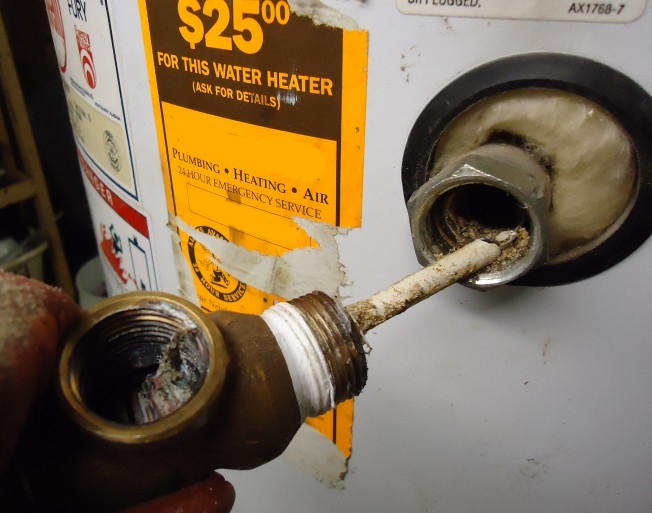What are your concepts on What Kind of Maintenance Do Water Heaters Need??

Hot water is important for day-to-day convenience, whether it's for a rejuvenating shower or washing recipes. To ensure your warm water system runs successfully and lasts longer, regular upkeep is essential. This post offers practical ideas and insights on just how to preserve your home's hot water system to stay clear of interruptions and costly repair services.
Introduction
Keeping your home's hot water system could appear challenging, yet with a few straightforward steps, you can guarantee it runs smoothly for many years to come. This overview covers everything from recognizing your hot water system to do it yourself maintenance ideas and knowing when to call expert aid.
Significance of Keeping Your Hot Water System
Normal maintenance not just extends the life expectancy of your warm water system but likewise guarantees it operates successfully. Overlooking upkeep can lead to reduced performance, higher energy costs, and even premature failing of the system.
Signs Your Warm Water System Demands Maintenance
Understanding when your warm water system needs interest can prevent major concerns. Look out for indications such as irregular water temperature level, unusual sounds from the heating unit, or corroded water.
Understanding Your Warm Water System
Prior to diving into maintenance jobs, it's handy to understand the fundamental parts of your warm water system. Generally, this includes the hot water heater itself, pipes, anode rods, and temperature level controls.
Month-to-month Upkeep Tasks
Normal monthly checks can assist capture small concerns before they intensify.
Purging the Hot Water Heater
Purging your hot water heater removes sediment build-up, boosting efficiency and prolonging its life.
Monitoring and Replacing Anode Rods
Anode rods prevent corrosion inside the tank. Inspecting and changing them when broken is important.
Examining and Changing Temperature Setups
Readjusting the temperature level setups ensures optimal performance and safety.
DIY Tips for Maintenance
You can perform several upkeep jobs yourself to keep your hot water system in leading problem.
Checking for Leaks
Regularly evaluate pipelines and connections for leaks, as these can bring about water damages and higher bills.
Testing Stress Relief Valves
Testing the pressure relief valve ensures it functions correctly and prevents excessive stress accumulation.
Insulating Pipelines
Shielding hot water pipes lowers warm loss and can save power.
When to Call an Expert
While DIY upkeep is helpful, some problems require specialist competence.
Complex Problems Requiring Specialist Assistance
Examples consist of major leakages, electrical problems, or if your hot water heater is regularly underperforming.
Regular Professional Upkeep Perks
Expert maintenance can consist of complete evaluations, tune-ups, and making certain conformity with safety requirements.
Conclusion
Routine maintenance of your home's warm water system is important for performance, longevity, and price savings. By following these tips and recognizing when to seek professional assistance, you can guarantee a reliable supply of hot water without unexpected interruptions.
How to Maintain an Instant Hot Water Heater
Before tinkering with your hot water heater, make sure that it’s not powered on. You also have to turn off the main circuit breaker and shut off the main gas line to prevent accidents. Also turn off the water valves connected to your unit to prevent water from flowing into and out of the appliance. 2. When you’re done, you have to detach the purge valves’ caps. These look like the letter “T†and are situated on either side of the water valves. Doing so will release any pressure that has accumulated inside the valves while at the same time avoid hot water from shooting out and burning your skin. 3. When the purge valves’ caps are removed, you have to connect your hosing lines to the valves. Your unit should have come with three hoses but if it didn’t, you can purchase these things from any hardware or home repair shops. You can also get them from retail stores that sell water heating systems. Read the user’s manual and follow it to complete this task properly. When the hosing lines are connected, open the purge port’s valves. 4. You should never use harsh chemical cleaners or solutions when cleaning your unit. Make use of white vinegar instead. It should be undiluted and you’ll probably use about 2 gallons. 5. Now flush your water heater. This task should probably take about 40 minutes. We can’t give you specific directions for this because the procedure is carried out depending on the type, model and brand of your heater. With that being said, refer to the user’s manual. 6. When you’re done draining the unit, you have to turn off the purge port valves again. Remove the hosing lines that you earlier installed on each of the water valves. Put the valve caps (purge port) back in their respective places and be very careful so as not to damage the rubber discs that are found inside these caps. 7. Now that everything’s back in place, check your user’s manual again to find out how to reactivate your water heating system. 8. Once it is working, turn one of your hot water faucets on just to let air pass through the heater’s water supply pipes. Leave the tap on until water flows smoothly out of it. https://www.orrplumbing.com/blog/2014/september/how-to-maintain-an-instant-hot-water-heater/
:max_bytes(150000):strip_icc()/reasons-gas-water-heater-not-working-5212987-hero-fe6b82a59053421c88b7d13ea311d3c5.jpg)
We hope you enjoyed our topic about Tips on Maintaining a Water Heater. Thanks a ton for spending some time to read our short article. Enjoyed our content? Please quickly share it. Help other people check it out. Thanks a lot for your time invested reading it.
Visit Url